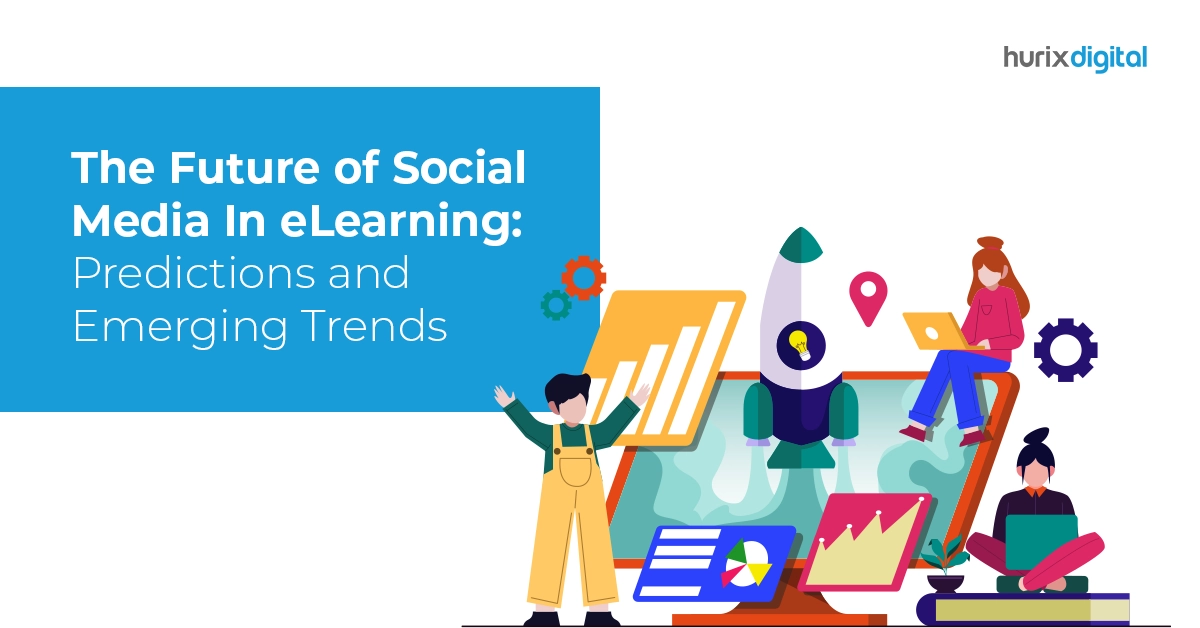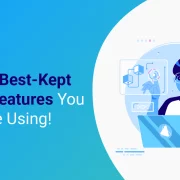
The Future of Social Media In eLearning: Predictions and Emerging Trends
Summary
Learn about the future role of social media in eLearning. This post discusses predictions and emerging trends that could shape the way social media integrates with online education.
The world of education is going through major changes due to technological advances and the influence of social media. When it comes to online learning, these changes highlight the importance of embracing innovative teaching methods.
Social media in eLearning plays a crucial role in not only connecting learners but also enhancing the overall learning experience. Additionally, it serves as a powerful tool for boosting collaboration and engagement among students.
In this post, we’ll explore its role, future trends, and relevant use cases to gain insights into how social media is reshaping the world of education. Let’s start!
Table of Contents:
- Understanding the Role of Social Media In eLearning
- Integration of Social Media in Education: Use Cases
- Four Emerging Trends in eLearning and Social Media
- Wrapping Up
Understanding the Role of Social Media in eLearning
While advanced technologies played a huge role in shaping the eLearning landscape, one cannot undermine the role of social media.
From game-based learning to immersive technologies, social media integration offers an engaging and personalized learning experience.
Here’s a quick glance at the comprehensive role of social media in forming eLearning strategies:
1. Facilitates Seamless Communication
Social media integration creates a smooth communication channel. Discussion boards, chat rooms, and messaging apps encourage learners to ask questions, share ideas, and engage in discussion.
Educational WhatsApp groups sharing day-to-day experiences are a classic example of a smooth communication channel.
2. Promotes Community Learning
Social media platforms such as LinkedIn have a virtual learning community. Here, the learners can share resources and collaborate on projects with like-minded peers. As a result, they can gain a unique perspective and knowledge base.
3. Harnesses the Power of UGC
User-generated content is a great way to gain valuable educational insights. Learners and trainers can create and share blogs, videos, and podcasts, augmenting the existing knowledge base.
4. Encourages Peer Learning
Peer learning is an amazing way to help simplify complex ideas. Social media allows learners to learn from and teach their peers via tutoring or assignment review. This also fosters a sense of community and shared learning experiences in the long run.
Also Read: Tech-Forward Training: Integrating Digital Tools in Workforce Learning
Integration of Social Media in Education: Use Cases
To get a better perspective on how social media can be leveraged for online education, here’s a quick look at its use cases:
1. Using Hashtags
This is a powerful way to organize and categorize educational content on social media platforms. Instructors can create unique hashtags for specific courses or topics, making it easier for students to find relevant material. For example, a physics class could use #Physics101 to gather resources, discussions, and updates in one accessible feed.
2. Live Streaming
Social media enables real-time interaction through live Q&A sessions. Instructors or guest speakers can answer questions from students, fostering immediate engagement. Platforms like Instagram Live, Facebook Live, or Twitter Spaces offer opportunities for dynamic and interactive discussions.
Studies show that around 62% of educators think livestream classes are more effective. This way, students can participate actively, ask questions, and receive instant responses, creating a more immersive learning environment.
3. Leveraging LinkedIn for Knowledge Transfer
Platforms like LinkedIn make it easier to connect with industry experts, SMEs, and peers. This allows the learners not only to expand their professional network but also to access career-specific resources.
4. Collaborative Projects
Another way to use social media for learning is by working together on projects. Students can utilize platforms like Facebook groups or integrated tools to collaborate on assignments. This virtual collaboration mirrors a group study environment, which enables participants to exchange ideas, tackle challenges, and collectively work towards project goals.
Four Emerging Trends in eLearning and Social Media
Social media in eLearning caters to the evolving requirements of learners while turning classrooms into dynamic learning communities.
Here are key emerging trends:
1. Gamification in eLearning
In this digital age, captivating learners amid distractions comes with a significant challenge.
Gamification in eLearning not only focuses on imparting informative content but also adds elements of fun to motivate learners during the learning process. By incorporating game-like elements, such as challenges, rewards, and competitions, gamification captivates learners’ attention and encourages active participation.
2. Microlearning
With increasingly busy lives and shorter attention spans, microlearning has gained prominence. This has made bite-sized content one of the most popular forms of acquiring knowledge effectively.
By breaking down complex topics, microlearning ensures that learners can absorb information in manageable portions, enhancing retention and understanding. This way, learners can engage with specific concepts or skills in a focused manner.
3. Integration of AR and VR Technologies
The advent of technologies like augmented reality (AR) and virtual reality (VR) has completely transformed eLearning. Take Metaverse, for instance. This technology is changing online education with immersive learning experiences.
Additionally, the metaverse enables the learners to get first-hand experience, speeding up the learning process and allowing them to retain the knowledge more effectively.
4. Adoption of AI Learning
The adoption of AI in online education offers valuable insights into learners’ behavior and their specific preferences. It is not only revolutionizing the learning experience but also providing educators with a goldmine of data. This way, it enhances the effectiveness of education by offering a personalized and data-driven approach.
Also Read: Ensuring Consistency and Quality in Translated Workforce Learning Materials
Wrapping Up
The world of online education is changing a lot due to technology and social media. Trends like AI, VR, and microlearning are making learning more personalized and engaging. To make the most of these changes, having strong eLearning strategies is crucial.
The best way to yield the optimum benefits of these trends is to have strong eLearning strategies in place. With a robust LMS, offering personalized, efficient, and targeted learning solutions becomes easier and faster. As a result, you can cultivate a unique training culture and boost productivity.
Partner with Hurix Digital to explore the full potential of eLearning. We can help you create comprehensive and personalized eLearning strategies and optimized solutions by employing advanced technologies.
Connect with us for more information!

Performance, Results, Growth, and Life-Long Learning define my professional life. I am passionate about making workplace learning planful, purposeful, and impactful. I take pride in partnering with clients and bringing them the best in learning design and creating solutions that address business challenges.





